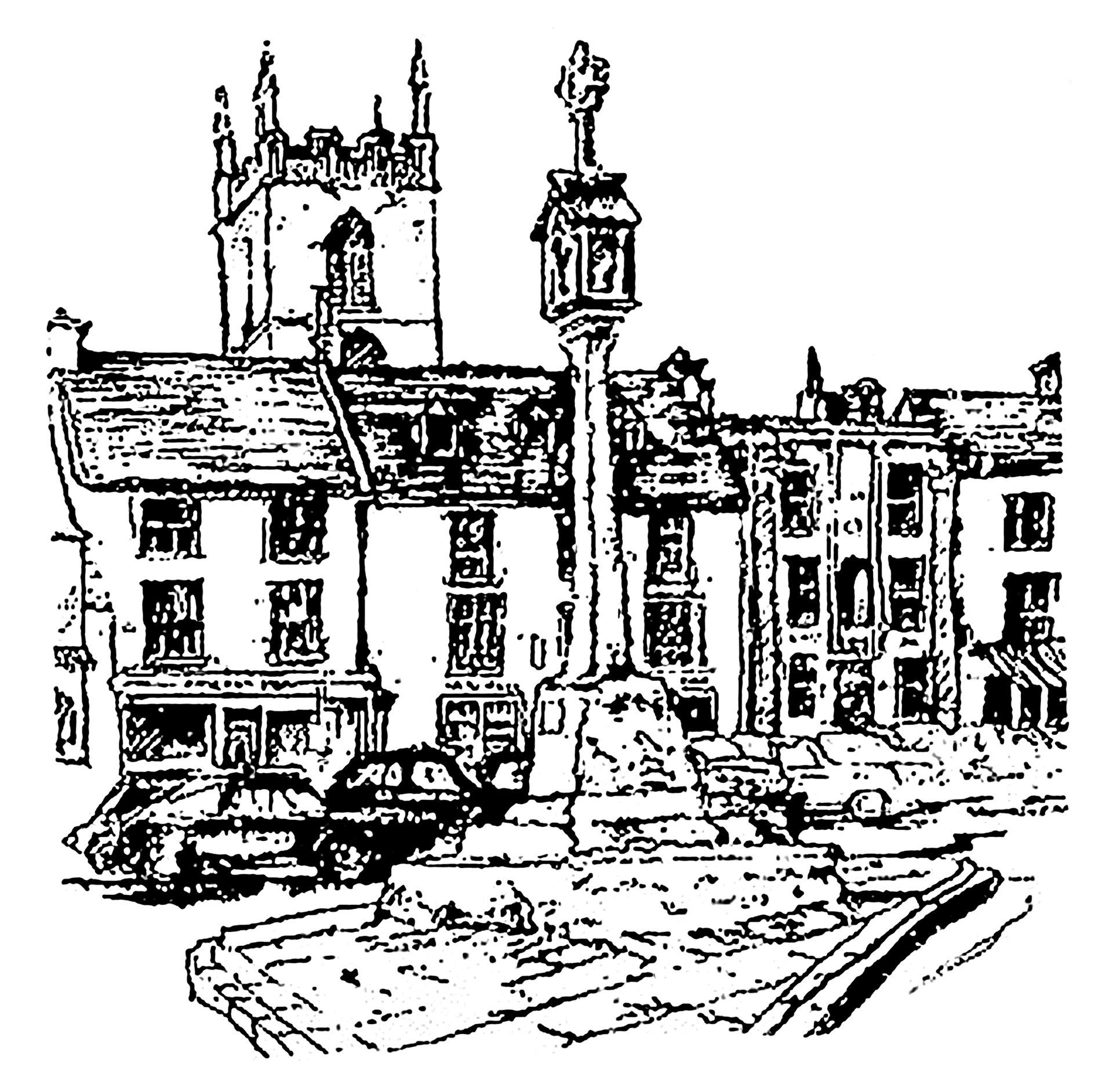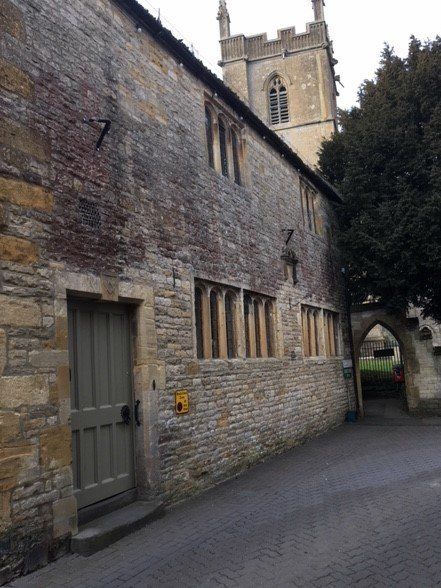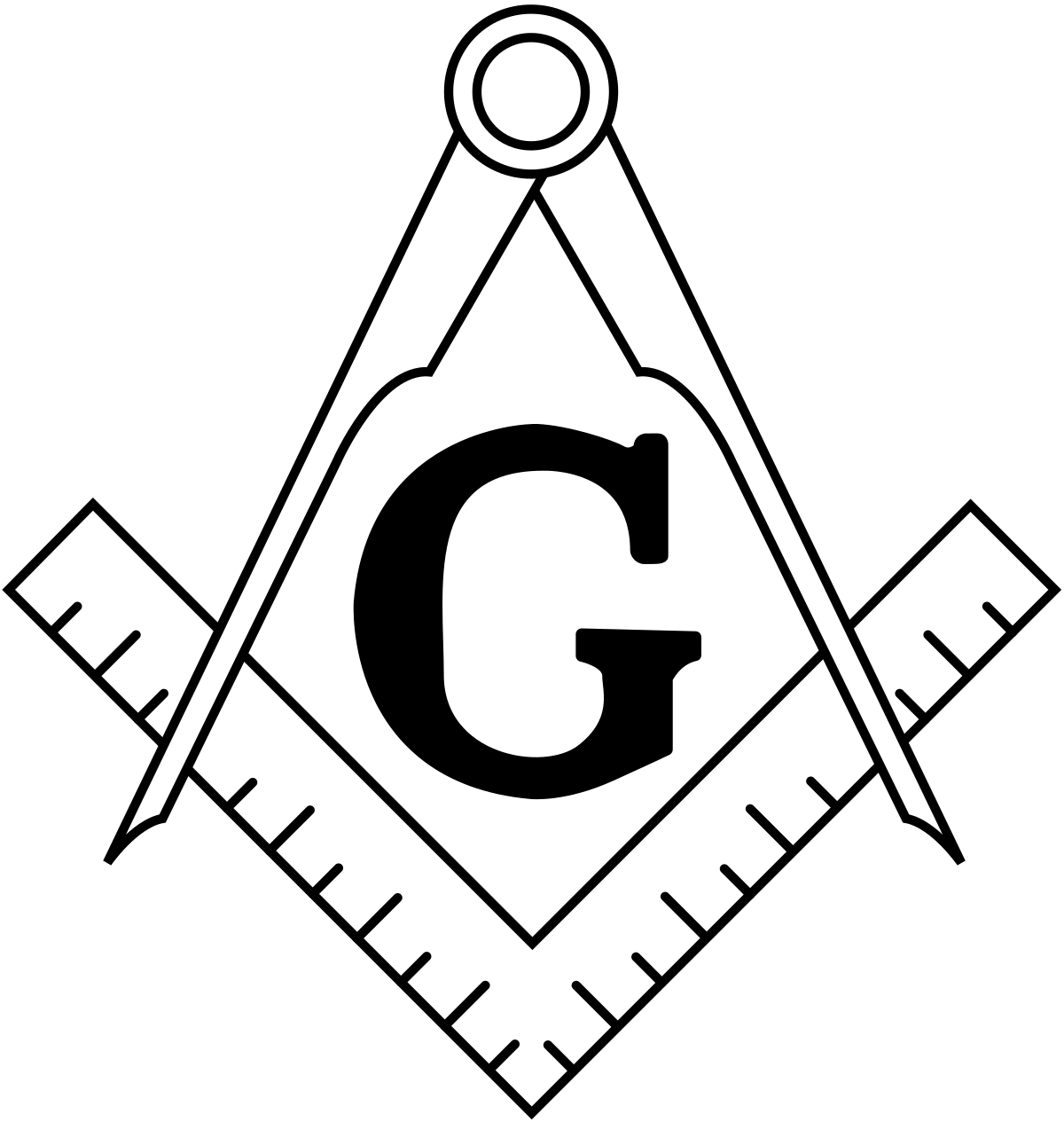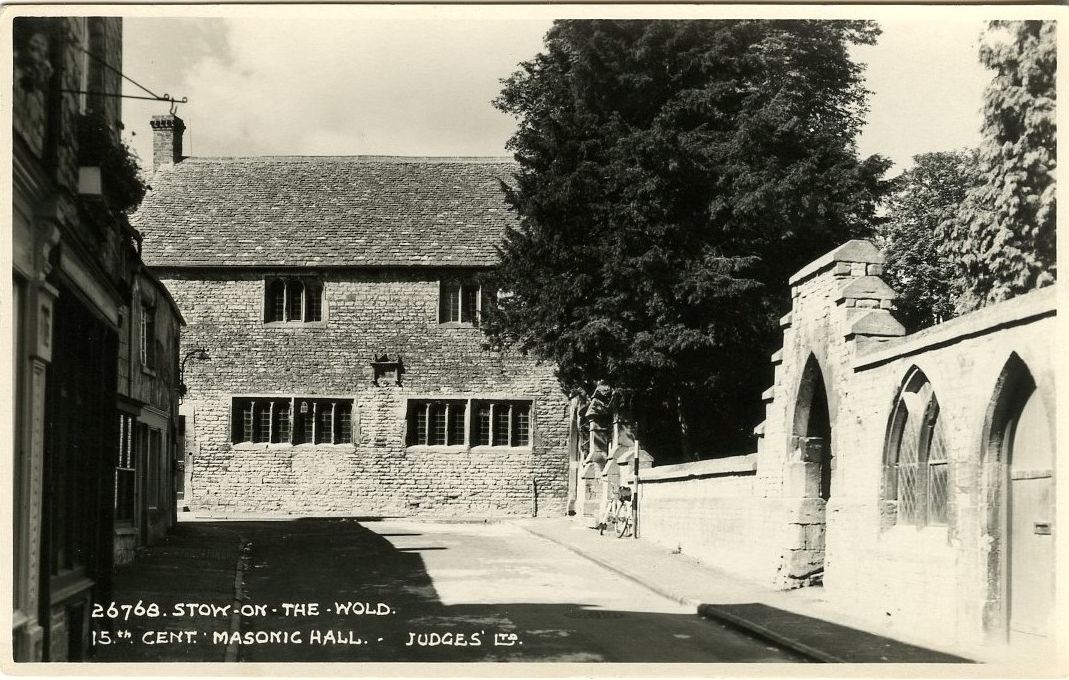The Old School House
(Masonic Hall)
Welcome to the historic market square of Stow-on-the Wold. At nearly 800ft above sea level, Stow is the highest Cotswold town. It is located at a point where the Roman Fosse Way and several other ancient routes cross and it has evolved as an important trading centre and meeting place with a history deeply steeped in the wool trade. It has a long history dating back to an Iron Age fortified settlement on top of the hill and had a special importance in the first English Civil War as the last battle was fought here back in 1646.
In his will, dated 1476, William Chester (whose father Richard erected the cross in the square) made a bequest for the building of eight timber-framed alms houses and a school next to the church. He also left provision for a stipend of £6 per annum to teach the children of Stow. As a result, the local Guild of Holy Trinity, who raised funds for the development and management of church property, built and managed the school and alms houses. The Guild also ran a hospice situated where the Porch House stands today and built in the 10th century. The school was probably run by monks from Evesham Abbey. The residents of the alms houses were required to go to church daily and received 8d. a week, or 12d. for a married couple.
By the time Queen Elizabeth I came to the throne in 1558 the school and alms houses were said to be dilapidated and in a poor state of repair. The most likely explanation is that when the monks were removed by Henry VIII during the dissolution of the monasteries (1536-41), the school was abandoned and left to go to ruin.
They were rebuilt in 1594 by Richard Shephum, a wealthy London merchant with land in Southwark. A plaque commemorating this can be seen on the front of the hall. The plaque is in Latin and translates as - ‘A scholastic foundation for poor children built by Richard Shephum, citizen and merchant of London. A.D. 1594’. At the time, the building became a grammar school for the instruction of boys in Latin, science and polite literature. In his will of 1604, Richard Shephum left a sum of £36 per annum for the management of the school and the alms houses behind it.
Freemasonry in Stow began with the formation of the Prince of Wales Lodge, No. 951, in 1863. Initially the Lodge met at the Unicorn Hotel at the top of Sheep Street. The Unicorn Hotel is an 18th century building that was originally a coaching inn and meeting place. Petty Sessions were heard there and on market days the place would have been crammed with farmers, merchants, traders and bankers.
In 1869 their meetings moved further down Sheep Street to the Victoria Brewery, which had opened in 1837. In 1860 two brothers, Richard and William Gillett, took over the brewery. William Gillett was a master stone mason and in 1869 built the main brewery office that can be seen today at the entrance to Brewery Yard, sporting an uncharacteristic flint covering. William’s building included offices on the ground floor and a Masonic Temple on the upper floor. The Prince of Wales Lodge continued meeting there and in 1876 William Gillett became their Worshipful Master.
In 1889 the Charity Commission ordered the old school building to be sold, probably for less than its true value. In 1890 it became a private residence for a few years until it was purchased by the Prince of Wales Lodge in 1893. The Lodge moved there in 1894 and have continued to meet there ever since. You can see their crest above the entrance.




